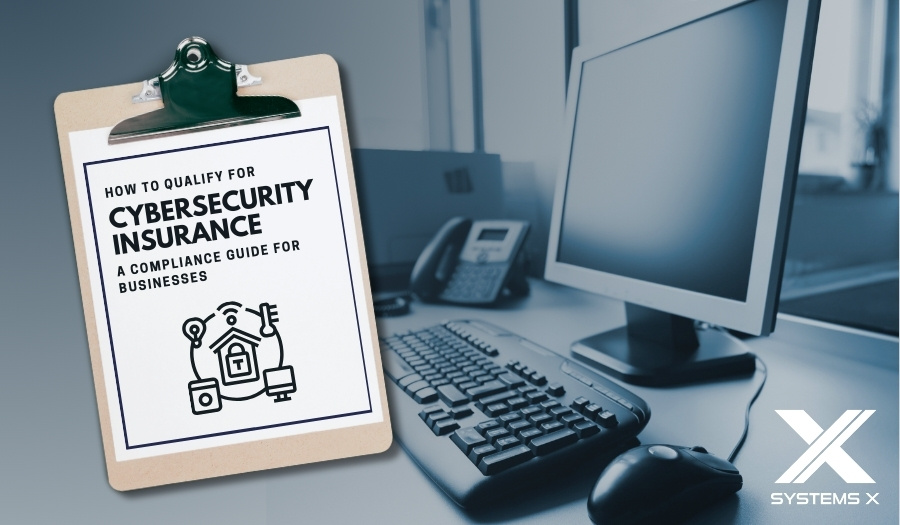Why Is Integrated Management More Necessary Than Ever?
For businesses to function effectively in the current era of massive market competition, it’s essential that they actively utilize the best, most...

What is Cybersecurity Risk Management? Cybersecurity risk management is a specialized practice that prioritizes defensive measures for cybersecurity designed to address potential threats and mediate their adverse impacts. It’s impossible for businesses to completely protect themselves against every possible cyber-attack or eliminate every possible system vulnerability, which is why they need to develop a comprehensive risk management approach for all of their cybersecurity investments. By establishing a practical cybersecurity risk management approach, they can prepare and protect themselves by addressing their potential security flaws and common threat trends within their industry. They can also better monitor the kinds of attacks that have the potential to impact their business significantly.
Related: 5 Common Cyber Threats to Watch Out For
When identifying potential cybersecurity risks, a company must consider many factors, starting with three key elements; the potential and active threats, system vulnerabilities, and consequences of potential cyberattacks and cybersecurity breaches. These variables can be plugged into the general risk equation that will provide the company with a basic understanding of its cybersecurity risks:
Cyber risk = Consequence of attack x Likelihood of attack
This equation can be beneficial for businesses looking for a baseline to understand their potential cybersecurity risks. However, it’s important to note that the math behind this calculation is highly prone to subjective interpretation, especially since many of the variables involved are often incredibly difficult to measure quantitatively.
When it comes to cybersecurity risk management, it’s essential to understand the range of cyber risk management frameworks that businesses and corporations use to standardize and document their risk management methodology. These frameworks are vital to conducting risk assessments, identifying gaps in security controls, analyzing these gaps, and developing additional cybersecurity investments based on said analysis. Businesses can execute new security control strategies while monitoring their performance and improving them in the future. The following are four of the essential cyber risk management frameworks to understand.
One of the most commonly used cybersecurity management frameworks within the industry is The National Institute of Standards and Technology Cybersecurity Framework (NIST CSF). It provides a detailed end-to-end map of the five core functions of cybersecurity risk management (identify, protect, detect, respond, and recover) and all of the various activities and outcomes they can involve.
One of the most well-known and longest-running cybersecurity frameworks in the industry is the ISO/IEC 27001. It provides a rigorous and certifiable set of standards and conditions for systematically managing risks posed by information systems within the realm of cybersecurity. It was produced by the International Organization for Standardization (ISO) and International Electrotechnical Commission (IEC), which also manages the ISO 31000 standard to provide guidelines for superior enterprise risk management.
Related: 4 Cybersecurity Threats (+Solutions and Tips for Every Online User)
MITRE ATT&CK is a globally accessible knowledge base of adversary tactics and techniques based on real-world observations. The ATT&CK knowledge base is used as a foundation for the development of specific threat models and methodologies in the private sector, in government, and in the cybersecurity product and service community.
The Open Group developed the Factor Analysis of Information Risk (FAIR) cybersecurity framework to assist enterprises in understanding, measuring, and analyzing information risks. This data can then be used by risk professionals, cybersecurity experts, and company executives to help them make more well-informed decisions about the cybersecurity practices of their business.
The Department of Defense (DoD) developed the Risk Management Framework (RMF) to serve as a set of standards for all DoD agencies to follow so that they can manage and assess potential cybersecurity risks across all of their information technology (IT) assets. They break down their cybersecurity risk management strategy into six critical steps: categorize, select, implement, assess, authorize, and monitor.
Are you looking for a superior provider of top-quality cybersecurity services to protect your business and its information? Take a look at Systems X to learn about everything they can do for you and gain access to their vast array of fantastic resources.
There are several resources and tactics that companies can utilize to develop a practical cybersecurity risk assessment. However, the highly regarded guide created by the National Institute of Standards and Technology (known as the NIST 800-30) serves as an efficient starting point that many businesses would be wise to consider. Their guide outlines six specific steps that are required for developing a practical risk assessment for their cybersecurity. Companies would do well to refer to this guide when developing their own cybersecurity risk assessment, especially for the final three steps of the process, which are highly involved and require a significant amount of time and consideration to develop effective solutions.
The six critical steps discussed in the guide include:
The first step of developing a practical cybersecurity risk assessment involves identifying and characterizing as many potential threat sources as possible relevant to the safety and performance of a company and its clients. There are several categories that threats can fall under, such as environmental threats (including earthquakes, fires, and hurricanes) and adversarial threats (such as organized crime groups or hostile nation-states).
The second step of a cybersecurity risk assessment involves:
Common examples include traditional breaking and entering through forced physical entry, session hijacking, ransomware attacks, and phishing attacks. Phishing attacks, in particular, are a significant cybersecurity threat due to their minimal investment and high-reward strategies for cybercriminals looking to gain unauthorized access to private business data, credentials, and more.
Once potential threat events have been carefully identified, a business must also recognize their internal vulnerabilities that can affect the overall likelihood that specific threat events could result in a loss due to said vulnerabilities. Appendix F of the NIST 800-30 guide included at the beginning of this section can assist in this step. It provides a taxonomy of vulnerabilities and predisposing conditions that companies may have and need to correct to keep themselves and their clients safe.
Related: What’s the Real Cost of Bad Security Compliance?
Since the vulnerabilities of a company that affects the likelihood of a loss during an attack were determined in step three, the fourth step of a cybersecurity risk assessment involves putting those variables into the spotlight to determine the overall likelihood that specific threat events will result in a loss. This is a highly involved process- especially compared to those noted in the previous steps- and requires the use of at least three sub-steps to arrive at a usable conclusion. Businesses can refer to Appendix G of the NIST 800-30 noted in this section’s introduction to find all the necessary information to complete this step effectively.
This step is intended to help businesses and corporations determine the most likely impact of a potential loss event. Much like step four, this process is pretty involved and requires a considerable deal of time, effort, and flexible thinking to arrive at a usable answer that will help a business keep itself and its clients safe from potential threat events. Again, all of the information needed to complete this step can be located in Appendix G of the NIST 800-30 guide.
The final component of this six-step risk assessment process involves combining the likelihood and impact values that were carefully calculated in steps four and five to arrive at a total risk value for the business. Please feel free to examine Appendix 1 of the NIST 800-30 guide noted above to find more details on how to determine these values through the use of a specialized 9-block matrix.
A practical cybersecurity risk management approach is essential for businesses and corporations to implement and routinely update to keep themselves and their clients safe from potential cybersecurity threats. If you are a business owner looking to implement a top-quality cybersecurity risk management approach but aren’t sure of the best ways to start, please consider contacting the experts at Systems X to learn what they can do for you. Not only can they provide you with practical solutions to keep your private information protected from potential security breaches, but they also offer assistance on IT management and advising, CMMC/NIST compliance, industrial IT solutions, and more.
Have you been searching for top-quality providers of cybersecurity solutions and expertise? Check out the fantastic range of services offered by the experts at Systems X today, or contact them today to learn more about everything they can do for you and your business.

For businesses to function effectively in the current era of massive market competition, it’s essential that they actively utilize the best, most...

Cybersecurity insurance has become a crucial safeguard for businesses of all sizes. However, meeting specific compliance standards is critical in...